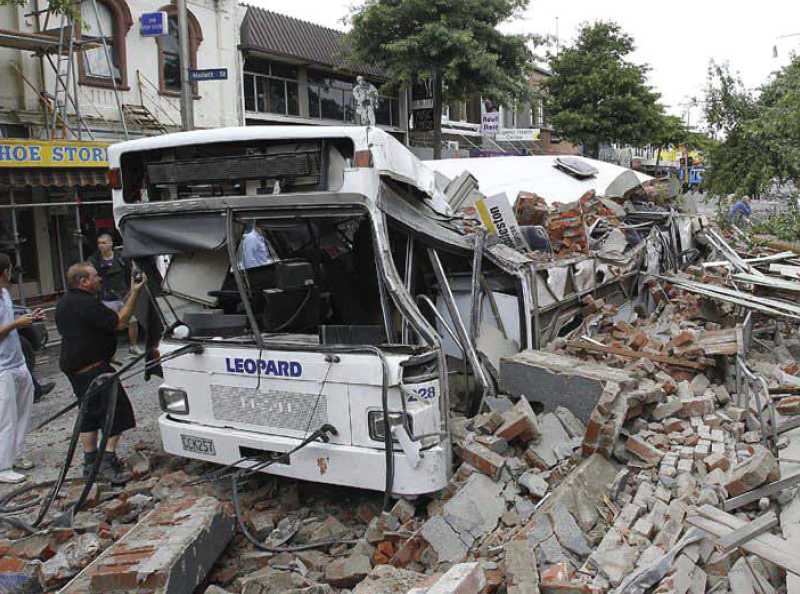Case Studies | Data & Internet Connectivity
Emergency Management Canterbury
Maintaining effective communications to coordinate emergency response in NZ’s South Island.
The Challenge
As Emergency Management Coordinator for the Canterbury Regional Emergency Management Office in Christchurch, New Zealand, Andrew Howe must plan and prepare for all manner of natural and man-made emergencies. One vital component to this is to ensure effective telecommunications are maintained at all times when infrastructure and regular communication channels may be severely compromised by earthquake or other disasters.
The Solution
A layered communication system has been developed to cater for any eventuality, the most autonomous of which is the BGAN, or Broadband Global Area Network, which uses a geo-stationary satellite system to ensure continuous communications can be maintained at all times.


“Satellite is one of those layers that we have, knowing that it can still work in any eventuality. Satellites don’t fall out of the sky so we can rely on satellites. ”
Andrew Howe, Emergency Management Coordinator, Canterbury Regional Emergency Management Office
The Operational Challenge
Having been through the Darfield earthquake of 2010, the Christchurch earthquake of 2011, the North Canterbury earthquake of 2016, and the Port Hills bushfires of 2017, Andrew Howe knows firsthand the importance of maintaining effective lines of communication during an emergency.
His job also entails planning and preparing for the Big One – the anticipated magnitude 8 earthquake that is predicted along the Alpine Fault that runs the length of New Zealand’s South Island for 480 km, between the Pacific Plate and the Indo-Australian Plate.
“All the stuff we’ve had happen to us and what we could have happen to us, still being able to communicate is essential for the emergency response effort,” says Andrew.
“It all builds up, the pressure it puts on councils. Our big threat is the Alpine Fault… There could be a magnitude 8 earthquake that could affect the whole South Island.”
This need for disaster preparedness led to the formation of a purpose-built Regional Emergency Coordination Centre, bringing together all emergency services – police, fire brigade, ambulance – under one roof as a communications hub. Ensuring all emergency services are able to maintain communications and meet their data needs in even the most extreme disasters poses a major challenge.
The Operational Solution
With a 20-year career in the NZ Army, Andrew understands the importance of emergency preparedness.
He has developed a layered communications system so that when one fails there are multiple backup options, from VHF radio networks through to satellite phones and BGAN (Broadband Global Area Network) terminals. The BGAN system, in particular, has proven its value in a variety of scenarios over a long period. “Ten years ago we bought 10 of these units, and we put one into every local authority in Canterbury,” says Andrew. “We bought them as a bit of an insurance policy but they’ve proved their worth a few times. They’re a simple unit to use, you don’t need an IT team, and it’s allowed us to stay connected, no matter what.”
Because of New Zealand’s relatively small land mass and varied geography, conventional mobile and satellite signals can sometimes be unreliable, but a geo-stationary satellite network ensures constant coverage, no matter what infrastructure may be damaged in a disaster. “Once you were connected that was it. It’s a simple set up. They didn’t really need any land-based infrastructure, they can talk from unit to unit. The only utility you need is power to keep them charged,” says Andrew.
“We’ve connected a Wi-Fi access point to the BGAN and connected our laptops to the access point, running our whole operation through a BGAN, and it worked bloody well.”
The Outcome
New Zealand’s South Island has had more than its share of natural and man-made disasters in recent times, which has led to a high degree of emergency preparedness and a heightened awareness of the need for reliable communication.
The BGAN terminals have proven ideal for its rugged geography and remote populations that can easily become isolated in an emergency scenario.
“As a result of people seeing how they worked, a lot of councils across New Zealand started buying them from a health and safety perspective,” says Andrew. “I think we were the first organisation to do a bulk purchase of them in New Zealand, and what we’ve got still works.”
Their next challenge is coordinating the varied communications needs of the emergency services that now operate out of the one centre. “There have been a lot of lessons learnt. Out of all this destruction we’ve got a purpose-built centre with police, fire, ambulance,” says Andrew. “Now we’re working through that multi-agency type solution that everyone can share. There are some security challenges that we are working through.
Telecommunications is a steep learning curve, but we’ve had great support from you guys.”
The Hardware

BGAN Terminals
Global, high-speed vehicular data connectivity regardless of the landscape.

Satellite Phones
Iridium's feature-rich handset that raises the bar on toughness.
Ask a question
Do you want to know more about a Pivotel service plan, product or solution?
Ask our friendly Customer Care team here.
Find your local Pivotel Dealer
Did you know that we have a nationwide dealer network of over 160 dealers?
Find your local Pivotel critical communications expert here.